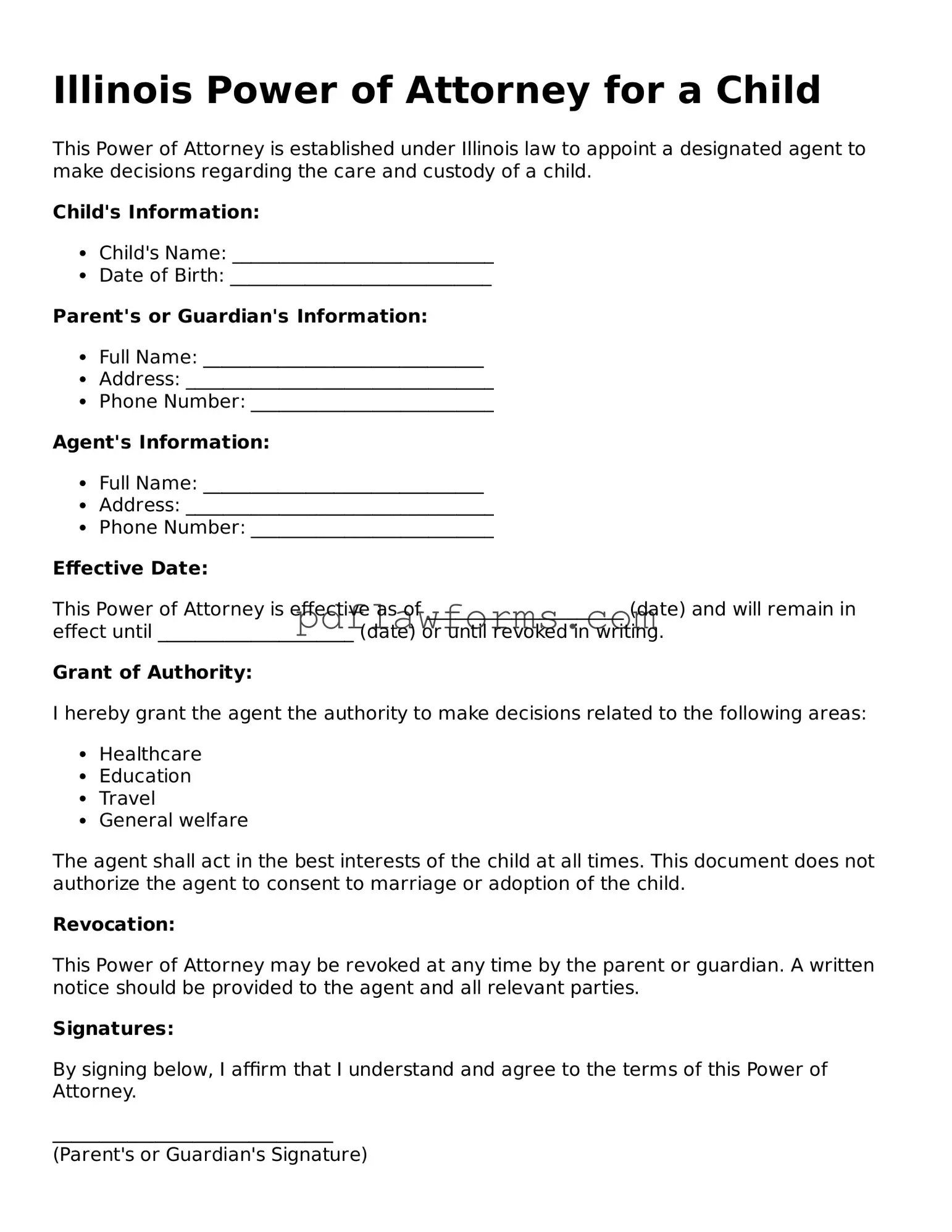When it comes to ensuring that your child's needs are met in your absence, the Illinois Power of Attorney for a Child form serves as a vital tool for parents and guardians. This legal document allows you to designate a trusted individual to make decisions on behalf of your child, covering areas such as education, health care, and general welfare. By filling out this form, you can provide peace of mind, knowing that someone you trust will be able to act in your child's best interest when you cannot. The form not only outlines the specific powers granted to the designated agent but also sets clear limitations, ensuring that your wishes are respected. It is important to understand the process of completing this form, including the necessary signatures and potential notarization, to ensure its validity. Additionally, knowing when and how to use this power of attorney can help parents navigate unexpected situations, whether it’s a short-term absence or a more prolonged separation. This article will delve into the nuances of the Illinois Power of Attorney for a Child form, guiding you through its purpose, benefits, and the steps involved in creating this important legal document.
